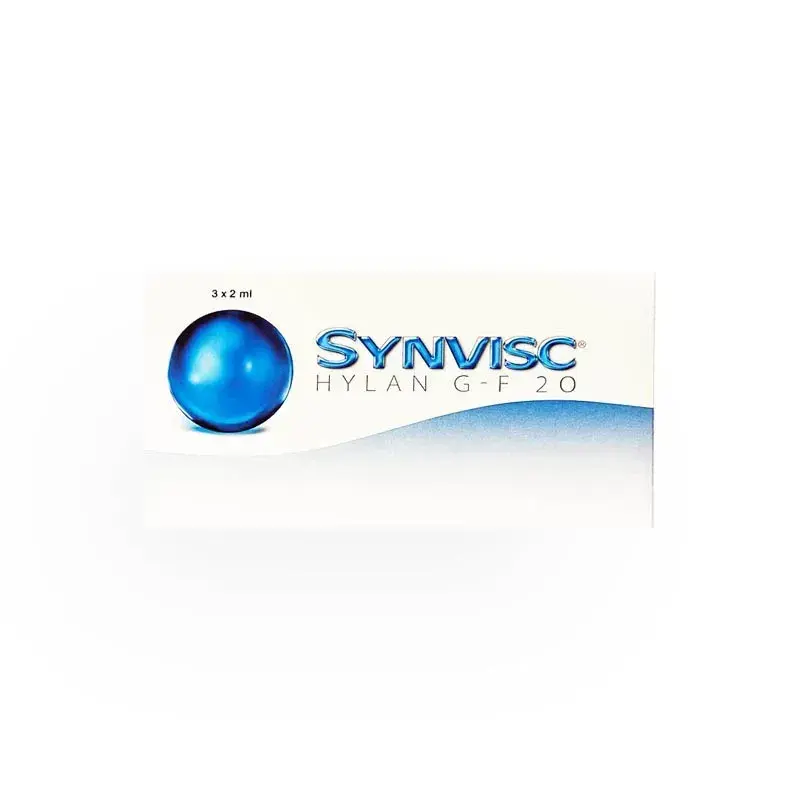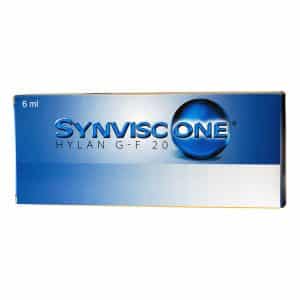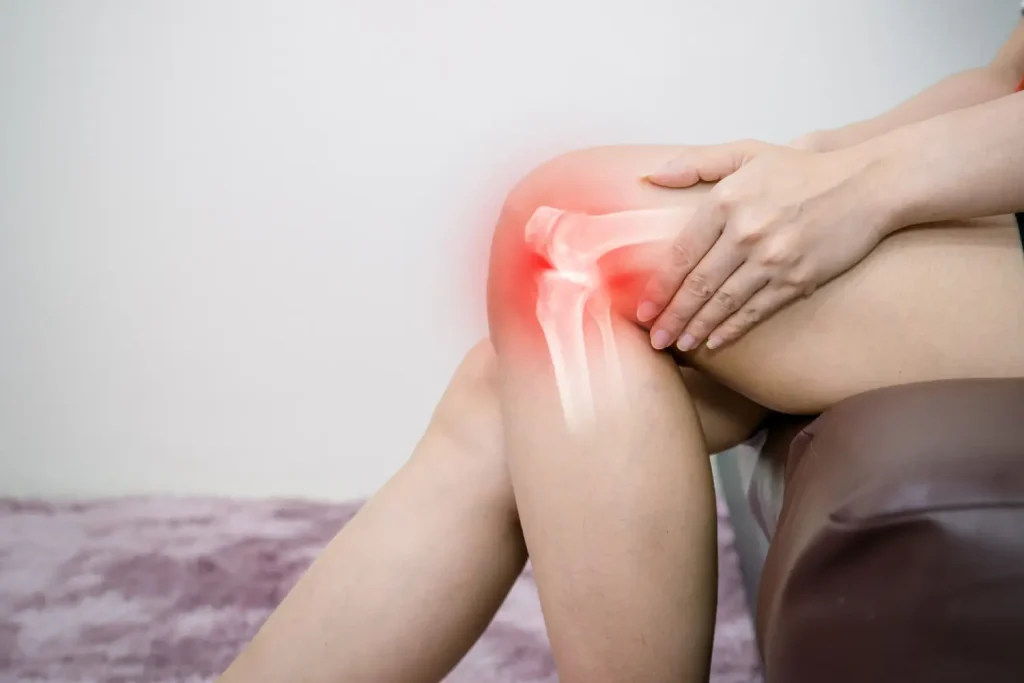According to orthopedic experts, viscosupplementation has emerged as an effective treatment option for knee osteoarthritis, especially when initial conservative approaches fail. This treatment involves injecting hyaluronic acid directly into the knee joint to enhance the synovial fluid’s viscoelastic properties, ultimately reducing pain and improving joint function.
Two of the most commonly compared viscosupplements are Synvisc and Orthovisc. Synvisc, derived from chicken combs, and Orthovisc, a non-animal-based alternative, both aim to relieve pain and improve mobility. While they share similar goals, differences in their composition and administration can influence their effectiveness and patient preferences.
In this article, we’ll examine the key differences between Synvisc vs Orthovisc, weighing their benefits and potential drawbacks to help you determine the better option for managing osteoarthritis.
Key Takeaways
- Viscosupplements like Synvisc and Orthovisc offer non-surgical relief for knee osteoarthritis by improving joint lubrication and function.
- Synvisc is derived from hyaluronic acid sourced from chicken combs, while Orthovisc is non-animal-based, making them suitable for different patient preferences.
- Both treatments reduce pain and improve mobility, with Synvisc providing relief for up to 6 months and Orthovisc lasting around the same period.
- Synvisc and Orthovisc have mild side effects, such as joint pain or swelling, but serious complications are rare.
- Factors like age, activity level, and severity of osteoarthritis influence whether Synvisc or Orthovisc is the better option.
About: Medical Spa RX provides medical practices with premium products at the best prices. If you’re looking to buy Synvisc for your practice, the sales representatives at Medical Spa RX can give you guidance.
Introduction to Viscosupplements
Viscosupplements are injectable treatments used to manage osteoarthritis (OA) pain, particularly in the knee. These injections contain hyaluronic acid, a substance naturally found in the synovial fluid of joints, which acts as a lubricant and shock absorber, helping the joint move smoothly.
Osteoarthritis causes the breakdown of cartilage, leading to pain, stiffness, and difficulty moving. Viscosupplements like Synvisc and Orthovisc help alleviate these symptoms by restoring the viscoelastic properties of the synovial fluid.
Injected directly into the knee joint, they provide cushioning and lubrication, reducing pain and improving mobility in people who haven’t found relief through conservative treatments like physical therapy or medication.
Understanding Synvisc
Synvisc is a viscosupplement derived from hyaluronan, a substance sourced from chicken combs. It closely mimics the natural synovial fluid found in the joints, providing essential lubrication and cushioning. The primary component, hylan G-F 20, is a highly purified form of hyaluronic acid that is designed to act like the body’s natural joint fluid, restoring smoother joint movement.
Synvisc enhances the viscoelastic properties of the synovial fluid within the knee joint. When injected into the joint, it helps lubricate and cushion the knee, reducing the friction between bones and alleviating the pain and stiffness associated with OA.
Clinical Evidence Supporting the Effectiveness of Synvisc
The effectiveness of Synvisc knee injections has been demonstrated through various clinical studies and trials:
- A pivotal clinical trial conducted by Wobig et al. reported an average reduction of 48.8% in weight-bearing knee pain at the six-month mark for patients treated with Synvisc, compared to a 25% reduction in those receiving saline injections. This highlights Synvisc’s superior efficacy over placebo treatments.
- Synvisc has been shown to provide long-lasting relief from OA symptoms. Clinical efficacy trials have demonstrated that Synvisc can deliver up to six months of pain relief for chronic knee OA. Additionally, patients have reported a 44.8% reduction in pain from baseline at 12 months, indicating sustained benefits beyond the initial treatment period.
- After following the proper Synvisc dosage, experts have found that it is more effective than non-crosslinked sodium hyaluronate (Hyalgan) in reducing OA knee pain. These comparative studies further support Synvisc’s clinical utility in managing OA symptoms.
Understanding Orthovisc
Orthovisc is a viscosupplement composed of non-animal-derived hyaluronic acid (HA), making it an ideal option for patients seeking a non-animal-based treatment. The HA in Orthovisc has a specific high molecular weight, which contributes to its effectiveness in cushioning and lubricating the knee joint.
It replenishes the joint’s synovial fluid, reducing friction between the bones and supporting smooth joint movement. When injected directly into the knee, Orthovisc improves the joint fluid’s viscoelastic properties, providing enhanced lubrication and shock absorption.
This action helps reduce pain, stiffness, and swelling associated with osteoarthritis, allowing for greater mobility and improved joint function.
Clinical Evidence Supporting the Effectiveness of Orthovisc
Clinical studies have demonstrated that Orthovisc is effective in providing long-term relief for patients with knee osteoarthritis:
- Clinical trials conducted in the United States have demonstrated that Orthovisc provides significant pain relief for patients with knee OA who have not responded adequately to conservative treatments such as pain medications or physical therapy. In a randomized controlled trial, patients receiving Orthovisc injections reported greater pain reduction and improved joint function than those receiving saline placebo injections.
- The long-term effects of Orthovisc indicate that patients may experience sustained pain relief and functional improvement for up to six months post-injection.
- Orthovisc has also been compared with other viscosupplements and treatments. A systematic review published in the BMJ concluded that viscosupplementation, including Orthovisc, leads to a small but significant reduction in knee OA pain compared to placebo.
Comparing Synvisc and Orthovisc
When comparing Synvisc vs Orthovisc, both treatments offer effective pain relief for knee osteoarthritis and improve joint function. However, they differ in key areas that may impact patient preference.
The duration of treatment effects varies between the two products. Orthovisc has been shown to provide pain relief for up to six months post-injection, while Synvisc typically offers relief for around three to six months. This difference in duration may influence the choice of treatment based on patient needs and preferences.
In terms of safety, both treatments are generally well-tolerated, but there are slight differences in side effects. Synvisc side effects may include temporary pain, swelling, or redness at the injection site. Orthovisc has a similar safety profile, with mild side effects like joint pain or stiffness post-injection.
Both viscosupplements carry a low risk of serious complications, making them safe choices for osteoarthritis treatment.
Choosing the Right Viscosupplement
Choosing the right viscosupplement for osteoarthritis treatment involves understanding each patient’s unique situation. Factors like age, lifestyle, and severity of symptoms play a crucial role:
- Age of the Patient: Younger patients might respond differently to treatment than older ones.
- Lifestyle and Activity Level: Active individuals may benefit more from one type of injection.
- Severity of OA Symptoms: The extent of pain and stiffness can guide which supplement is better.
- Previous Reactions to Treatments: It matters if a patient has had issues with similar therapies.
- Specific Knee Condition: The state of the knee joint itself can influence the choice.
Healthcare providers must carefully consider each patient’s specific needs and condition before deciding between Synvisc and Orthovisc for osteoarthritis (OA) treatment. Furthermore, patient education plays a vital role in shared decision-making. Providers should explain that Synvisc mimics the natural fluid in the knees and is derived from chicken combs, whereas Orthovisc has a particular molecular weight, making it especially effective for knee issues.
Conclusion
Choosing between Synvisc and Orthovisc depends on each patient’s unique needs and medical history. Both treatments effectively reduce knee pain caused by osteoarthritis, but their differences in composition and action may suit some individuals better than others. Consulting a healthcare professional is crucial to determining which option aligns with your specific condition and treatment goals.
Selecting the right viscosupplement can significantly improve joint mobility, reduce pain, and enhance quality of life for those managing knee osteoarthritis.
FAQs
1. How does Synvisc differ from Orthovisc in terms of composition?
Synvisc is made from hyaluronic acid derived from chicken combs, while Orthovisc contains non-animal-based hyaluronic acid, making it suitable for patients seeking non-animal-derived treatments.
2. How long do Synvisc and Orthovisc last?
Both treatments typically provide relief for up to 6 months, though individual responses can vary.
3. Can Synvisc and Orthovisc be used for conditions other than knee osteoarthritis?
While these treatments are primarily for knee osteoarthritis, they may sometimes be considered for other joints, such as the hips or shoulders, based on a doctor’s recommendation.
4. How often can I receive Synvisc or Orthovisc injections?
Both treatments are typically administered once every 6 months, but your doctor will determine the best schedule based on your condition and response to the treatment.
References
Jones BQ, Covey CJ, Sineath MH Jr. Nonsurgical management of knee pain in adults. American Academy of Family Physicians. Published November 15, 2015. https://www.aafp.org/pubs/afp/issues/2015/1115/p875.html
Johns Hopkins Medicine. (n.d.). Viscosupplementation treatment for arthritis. Retrieved September 18, 2024, from https://www.hopkinsmedicine.org/health/conditions-and-diseases/arthritis/viscosupplementation-treatment-for-arthritis
Drugs.com. (n.d.). Synvisc-One side effects. Drugs.com. Retrieved from https://www.drugs.com/sfx/synvisc-one-side-effects.html























